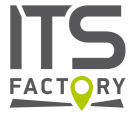Ero sivun ”HSL Navigator” versioiden välillä
Ei muokkausyhteenvetoa |
Ei muokkausyhteenvetoa |
||
| Rivi 3: | Rivi 3: | ||
===Concept idea=== | ===Concept idea=== | ||
Public transport users have mobile services but there is not a single service that covers all information needs on every step of one journey. Passengers and also cyclists needs a service that gives information and reliability in all situations. It has to work like a car navigator, user can just go out without pre-planning and trust he/she will get seamlessly into destination even there might be traffic disruptions or planned changes. | Public transport users have mobile services but there is not a single service that covers all information needs on every step of one journey. Passengers and also cyclists needs a service that gives information and reliability in all situations. It has to work like a car navigator, user can just go out without pre-planning and trust he/she will get seamlessly into destination even there might be traffic disruptions or planned changes. | ||
===Key requirements=== | '''Before a journey''' | ||
Service searches optimal route according personal preferences. It stores the route and keeps a track on most used places. Before departing time, service informs and reminds users. Possibility to set timer and alerts for search. | |||
'''During a journey''' | |||
User follows navigator instructions: how to walk to bus stop, when next bus goes, where to change, what to do if there is traffic disruption, how to change from car/bicycle to public transport mode, etc. Instructions can be visual, audio or tangible: map, text, augmented reality, speech, audio signals, vibration. | |||
Users are also information providers. They can inform if road work has cut off bicycle lane or escalators are out of order in metro station or other kind of route rankings, like most scenery route. Device movement can be tracked to collect data about fastest or convenient routes. | |||
'''After a journey''' | |||
Service stores statistic information and can tell to user e.g. how much CO2 emission was reduced compared to private car, money consuption, calories burned. | |||
===Key project requirements=== | |||
*Open source development | *Open source development | ||
| Rivi 15: | Rivi 26: | ||
*Have to work in all major mobile platforms | *Have to work in all major mobile platforms | ||
*Mobile device need to have positioning ability | *Mobile device need to have positioning ability | ||
*No centralized and manually updated | *No centralized and manually updated spatial information. Utilizes external data sources like Helsinki service map, OpenStreetMap, etc | ||
*User generated content | *User generated content | ||
*DeFacto API standards | *DeFacto API standards | ||
*Helsinki region is the first pilot area | *Helsinki region is the first pilot area | ||
Versio 28. elokuuta 2012 kello 17.33
Summary
HSL Navigator is an idea of open source project, aiming to produce mobile step by step navigation service to cyclists and public transport passengers. Also, this will be a test how to create public service, based on open source development, open data and crowdsourcing.
Concept idea
Public transport users have mobile services but there is not a single service that covers all information needs on every step of one journey. Passengers and also cyclists needs a service that gives information and reliability in all situations. It has to work like a car navigator, user can just go out without pre-planning and trust he/she will get seamlessly into destination even there might be traffic disruptions or planned changes.
Before a journey
Service searches optimal route according personal preferences. It stores the route and keeps a track on most used places. Before departing time, service informs and reminds users. Possibility to set timer and alerts for search.
During a journey
User follows navigator instructions: how to walk to bus stop, when next bus goes, where to change, what to do if there is traffic disruption, how to change from car/bicycle to public transport mode, etc. Instructions can be visual, audio or tangible: map, text, augmented reality, speech, audio signals, vibration.
Users are also information providers. They can inform if road work has cut off bicycle lane or escalators are out of order in metro station or other kind of route rankings, like most scenery route. Device movement can be tracked to collect data about fastest or convenient routes.
After a journey
Service stores statistic information and can tell to user e.g. how much CO2 emission was reduced compared to private car, money consuption, calories burned.
Key project requirements
- Open source development
- Service is targeted to all passengers (diverse user population)
- Have to work in all major mobile platforms
- Mobile device need to have positioning ability
- No centralized and manually updated spatial information. Utilizes external data sources like Helsinki service map, OpenStreetMap, etc
- User generated content
- DeFacto API standards
- Helsinki region is the first pilot area
